Affiliate disclosure: This post may contain affiliate links. Please see our Privacy Policy.
Sprouted garlic can be planted in the garden anytime the soil can be worked, and each clove will grow a whole new bulb. Most often, garlic starts to sprout in the pantry in spring, meaning you’ll be planting garlic in the spring for a late summer harvest.
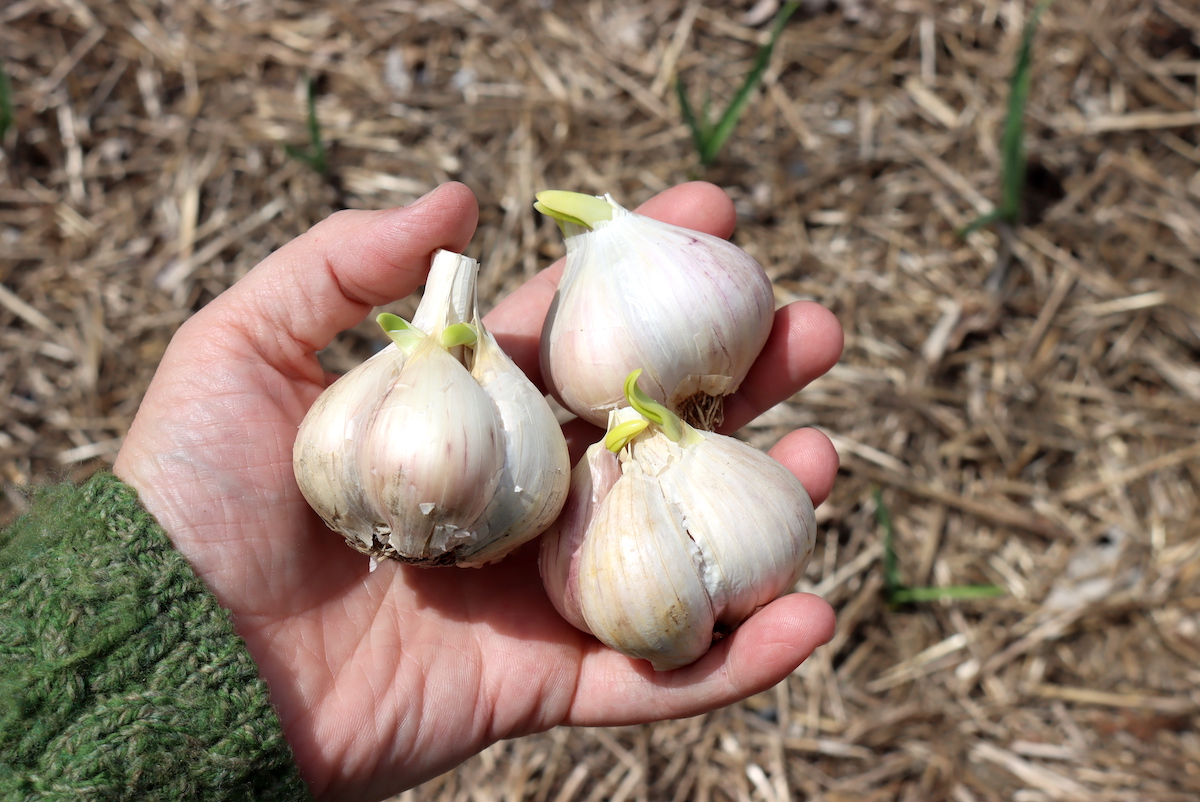
Garlic usually stores quite well, and it’ll keep for months in most cases. Still, garlic will sprout in the pantry if you store it long enough or in less than optimal conditions. It’s happened to everybody, that forgotten garlic bulb that you find after it’s developed a life of its own.
Planting sprouted garlic is a great way to give these forgotten veggies a second life, and each clove will grow a whole new garlic bulb in just a few months.
This past spring, my mom called looking for advice because her garlic was sprouting in her pantry, and she had no idea what to do with it. She’d never grown garlic and didn’t cook with it often. (That’s how it got lost in the first place.)
Is sprouted garlic safe to eat? Can you plant sprouted garlic? She had no idea.
She knows, however, that we grow a lot of garlic each year.
We plant garlic in the fall, and hundreds of cloves go into the soil for a harvest the following summer. We eat it by the bushel full, so she’d come to the right place. We store garlic all winter long, but inevitably we’ll have some sprouting garlic cloves in the spring.
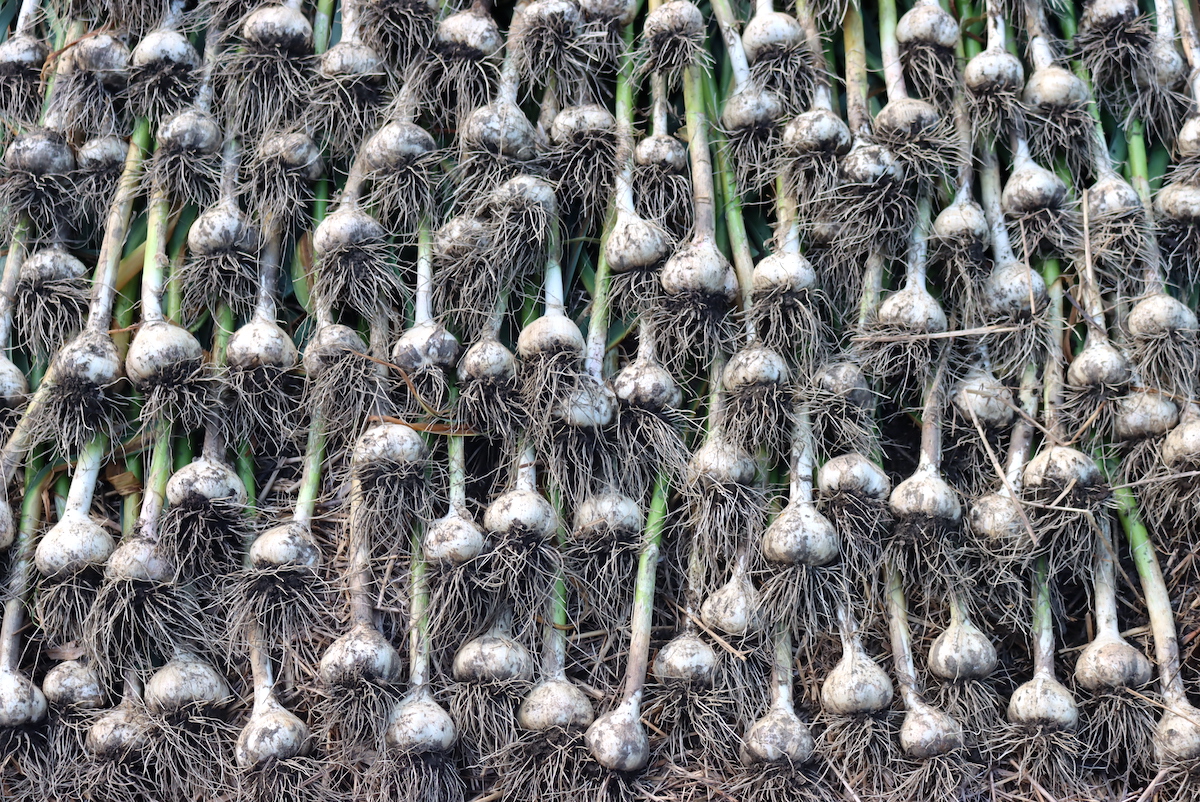
Is Sprouted Garlic Safe to Eat?
Sprouted garlic is perfectly safe to eat, though it’ll taste milder and greener than cured and stored garlic. More like green chives, without the bite of un-sprouted garlic.
Once the garlic starts to sprout, it won’t store very long. It will actually spoil if it’s not planted (or eaten) soon.
If you don’t have an immediate use for it in the kitchen, you’re better off planting sprouted garlic in the garden.
Onions work the same way, and that’s why it’s best to plant sprouted onions unless you have a use for them in the next few days.
With planting instructions in hand, my mom happily popped her garlic cloves into the soil, and a few months later, she had a dozen full garlic bulbs out in the garden.
While I often make sprouted garlic pesto with our green garlic, but this spring, I decided to put in a batch of spring-planted garlic to grow side by side with our fall-planted bulbs for comparison.
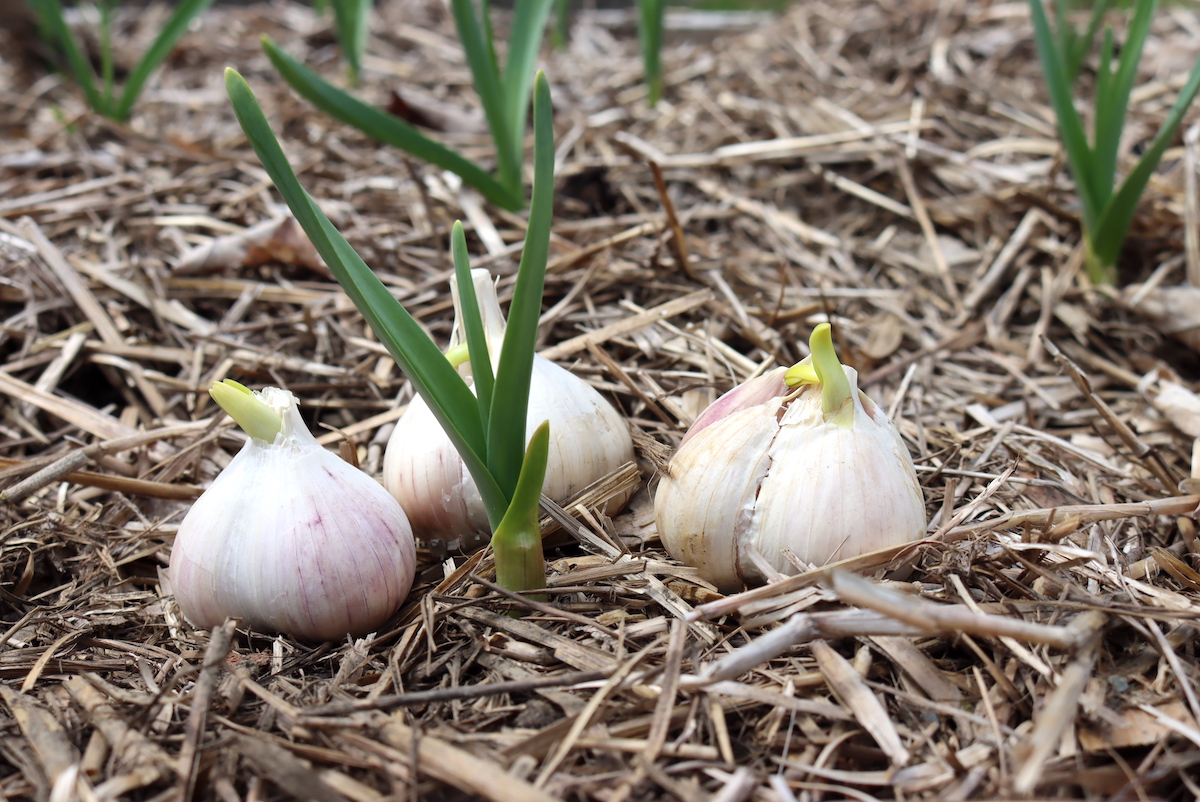
Can You Plant Sprouted Garlic?
You can plant sprouted garlic, but whether or not you can plant it outdoors depends on when it sprouts. If you have garlic sprout mid-winter when the soil is frozen, you can’t plant it outside (but you can plant it indoors in a pot).
If you’re in a warm climate where the soil doesn’t freeze (as my mom is in California), then you can plant garlic outdoors all winter long.
Ideally, you want to plant garlic outdoors when it’s relatively cool, not in the full heat of summer. Garlic dies back in the summer heat and won’t produce good bulbs if planted in the heat.
The only time you can’t plant sprouted garlic outdoors is when the soil is frozen (in cold climates). In that case, just plant sprouted garlic in a pot and tend it on a windowsill until things thaw out later in the spring.
If you plant it in the peak heat of summer, the bulbs will likely just hunker down and wait to sprout until things cool off in the Autumn. In that case, you won’t be able to harvest the new bulbs until the following summer.
When garlic is planted in the spring, it will still grow and produce full bulbs that same year, and you can harvest them alongside any garlic you’ve planted in the autumn when they fully mature in late summer.
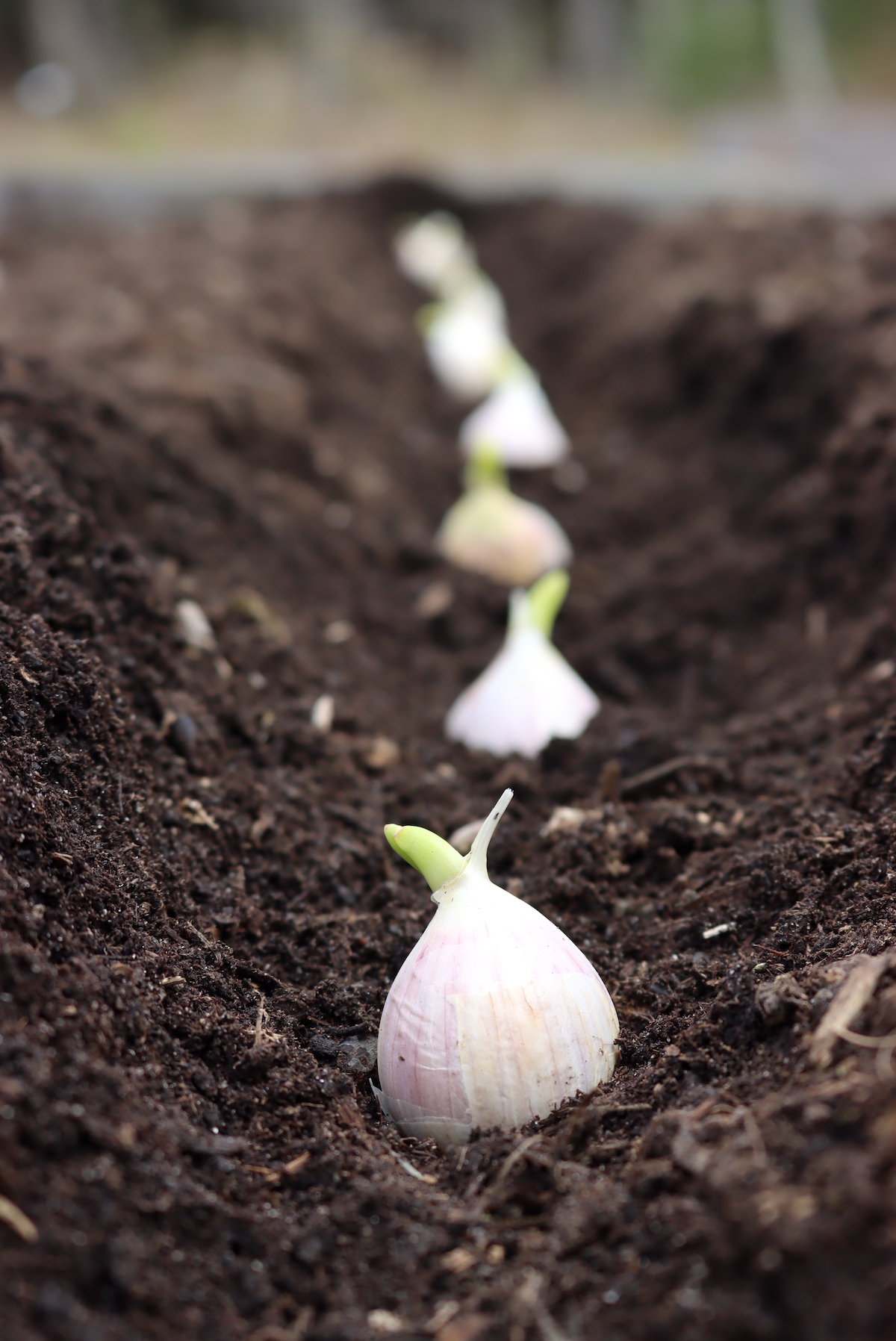
Preparing Sprouted Garlic for Planting
To prepare sprouted garlic for planting, start by peeling off the papery part of the outside of the bulb. You don’t need to peel the garlic completely, just enough to separate the cloves.
Each individual clove will form a whole new garlic bulb within a few months, so they’ll need to be planted individually. If you plant the whole bulb without dividing it, they’ll all grow in a clump, and each new bulb will be stunted.
That happens when you’re growing garlic as a perennial, and each year the bulbs sprout right on top of each other. It works, and the garlic does grow, but you don’t get nice full garlic bulbs.
Break the bulb into individual cloves, but leave the outside peel on each clove and try not to damage the green sprout.
(If they’ve been stored in the dark, the sprout will be yellow or white, and that’s fine too. It’ll turn bright green after a few days of growing in sunlight.)
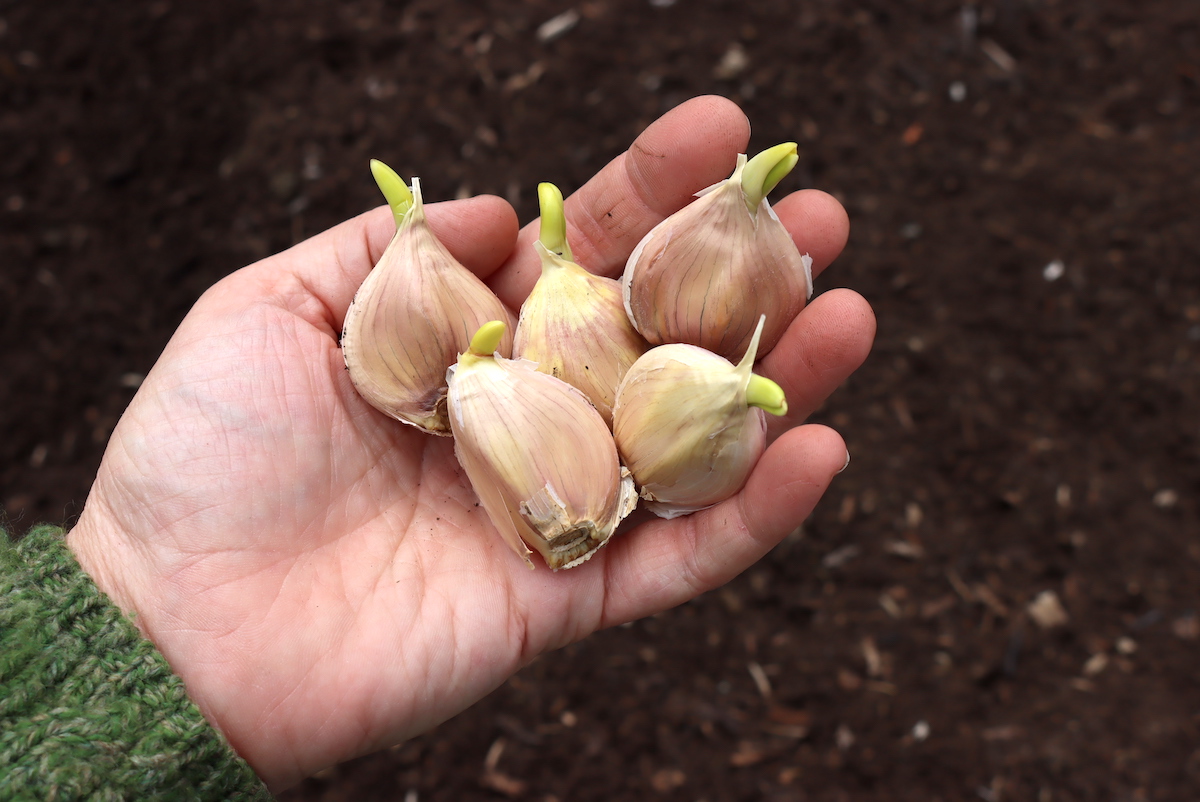
How to Plant Sprouted Garlic
Planting sprouted garlic in the spring is the same as growing garlic anytime, or at least the planting instructions are the same.
You want a rich, weed-free bed with plenty of compost added. Garlic is a heavy feeder and thrives in rich, well-amended soil.
In ideal soil, garlic cloves are planted about 6” apart and covered with 1 to 2” of soil. That’s 1 to 2” of soil over the top of the bulb, so the bottom of the clove is about 3 to 4” deep, depending on how tall the clove is.
Mulching helps prevent weeds and keeps the garlic insulated over the cold winter months. It’s important to mulch heavily in cold climates where you’re planting garlic in the fall.
When you’re spring planting garlic, the mulch helps keep the soil cool (which garlic likes) and suppresses weeds. It’s not strictly necessary since they won’t be overwintering, but it’s recommended.
Using 1 to 2” of straw mulch or raked hardwood leaves works best.
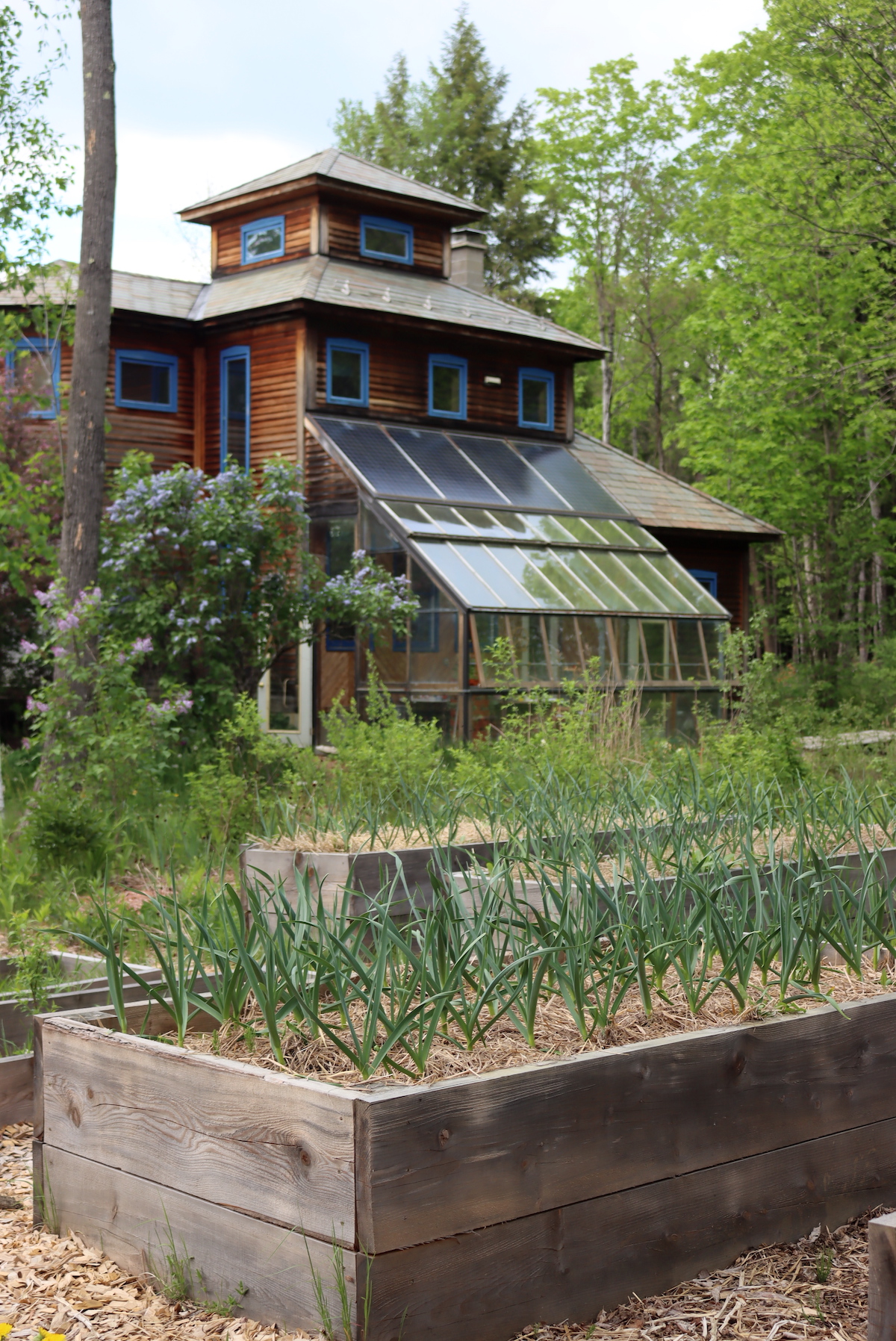
Caring for Spring-Planted Garlic
Once your sprouted garlic cloves are planted, they’ll start to grow to catch up to their fall-planted counterparts.
Your spring-planted garlic has a top sprout, but it’s behind schedule when it comes to root growth. That’s ok, it’ll catch up in the warmer soils of spring.
After a few weeks, the spring planted garlic will have good-sized roots, and it’ll only be a few weeks behind fall planted garlic.
The garlic will continue to grow and develop all season, and if you’re growing hardneck garlic varieties (as we do in the northeast), it’ll send up a garlic scape in the late spring or early summer, about a month or 2 after planting.
Most grocery store garlic is softneck garlic, which doesn’t produce a scape, so you won’t have to worry about trimming them.
Garlic scapes are basically garlic flowers, trim off the garlic scapes to encourage the bulb to develop. You can use garlic scapes in all manner or garlic scape recipes, and they taste like mild green garlic.
Removing the scapes is really important if you want nice big garlic bulbs. If you leave the scapes on, the bulb will be slightly stunted, and you’ll get a much smaller harvest in the end.
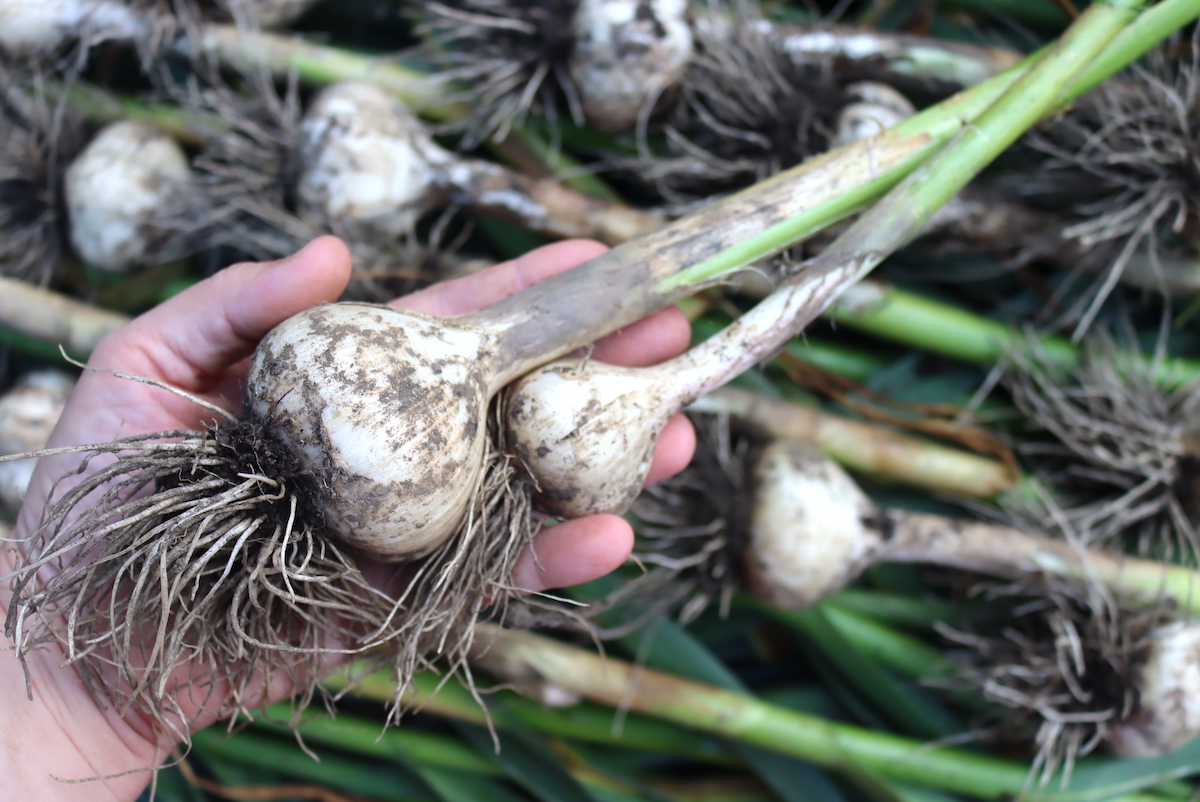
(Or leave the scapes on, and you can harvest top setting bulbils for planting, which are sort of like garlic seeds. They develop if the flowers aren’t pollinated. If you’re looking for a fun homeschool project, you can hand pollinate the actual flowers and breed your own garlic varieties. That’s tricky though, and you’re much better off just trimming the scapes and eating them.)
The bulbs will grow and develop throughout the spring into early summer, and they’ll start to die back in the heat of summer. Spring planted garlic is a little bit behind fall-planted garlic, and you’ll likely harvest it a few weeks later. (Or the cloves will be slightly smaller than fall-planted garlic.)
Once the bottom two pairs of leaves dry out and yellow, it’s time to harvest the garlic. It’ll likely be in July or August when temperatures are at their peak.
If you’re not sure your garlic is ready, just dig down at the base of the stem and check on the bulb. It should be well-formed and tightly held together.
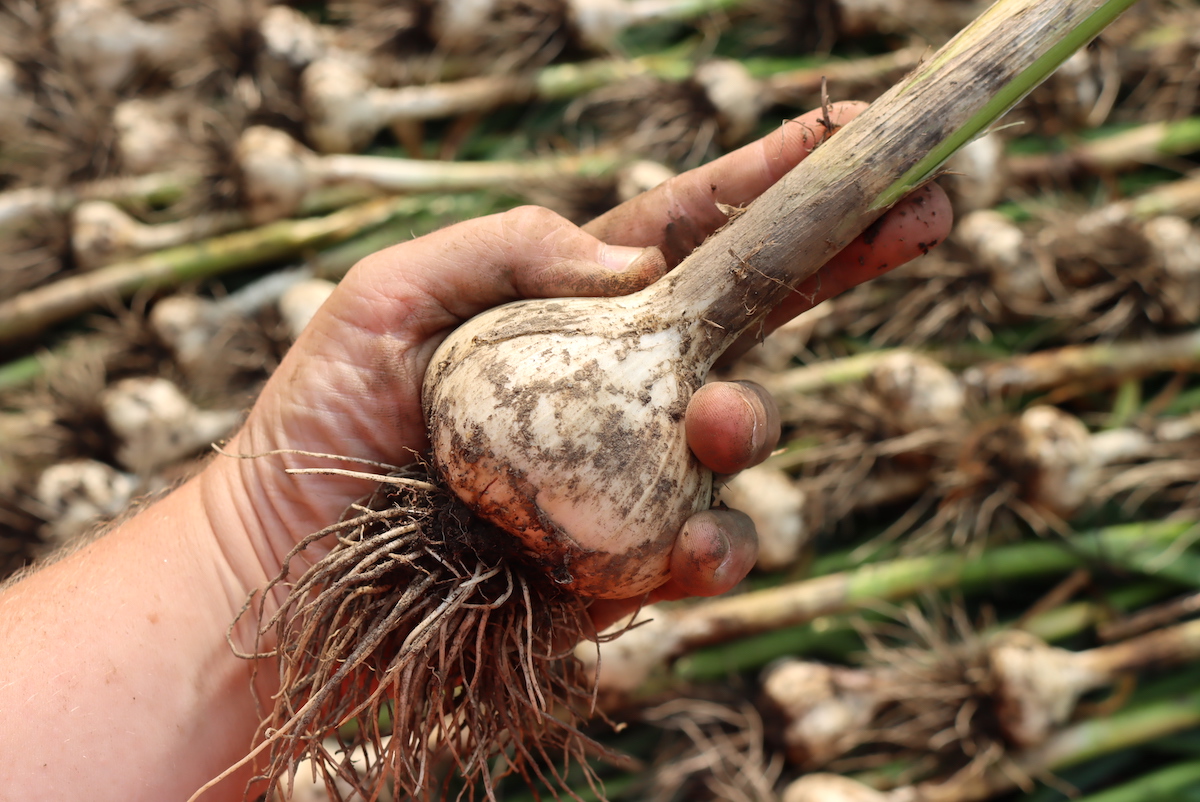
If you wait too long, the bulb will start to separate. That’s the bulb preparing to go dormant and wait to sprout again from each clove in the fall (to start the cycle over again).
Once the cloves start to separate, it’s still perfectly fine to eat, just as it’s perfectly fine to eat sprouted garlic. Separated garlic heads won’t store very long though, so best use those up first.
Spring-Planted Garlic vs. Fall-Planted Garlic
So what’s the difference between spring-planted and fall-planted garlic? Why do you plant garlic in the fall anyway?
Generally, garlic is planted in the fall, about 6 weeks before the soil freezes (in cold climates) or once things cool down substantially (in hot climates). In the first 6 weeks before the soil freezes, the garlic puts down deep roots and prepares to hunker down for the winter.
This fall, I planted a clove at the normal time, but I dug it up about 6 weeks later, right before the soil froze for the season. It doesn’t have a sprout above the soil, but you can see how much work it’d already done to prepare for the next growing season.
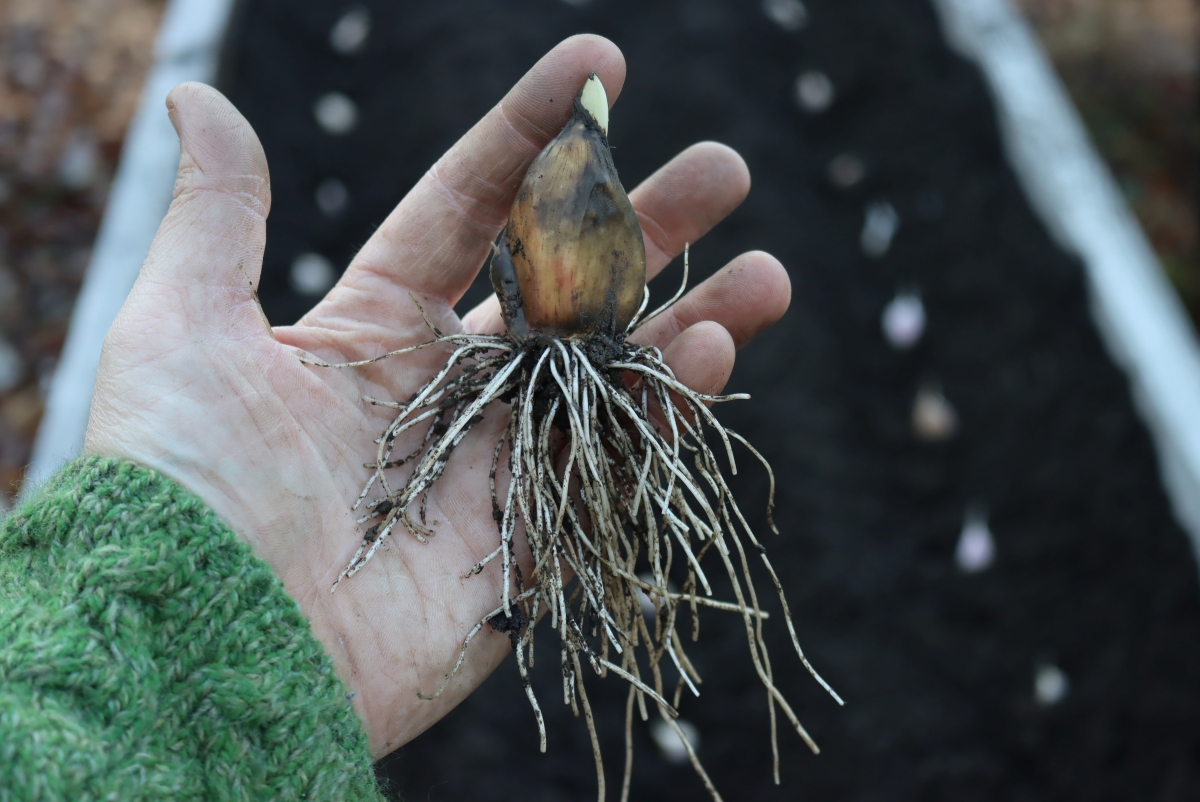
This initial preparation on the part of the fall-planted cloves means that they’ll be established and ready to shoot up as soon as things warm up in spring. They’ll be 6” tall before the first dandelions bloom.
The comparison becomes even starker when you look underground in the spring. I’m about to plant these sprouted garlic cloves in the spring, just a few weeks after our snow has fully melted, but they’re already quite a bit behind their fall-planted cousins.
Though the snow has only been gone a few weeks, the fall-planted garlic has already put on 9 to 10” of root growth, and a 6 to 8” shoot above ground. The spring-planted garlic will have to catch up this year without the headstart of fall planting.
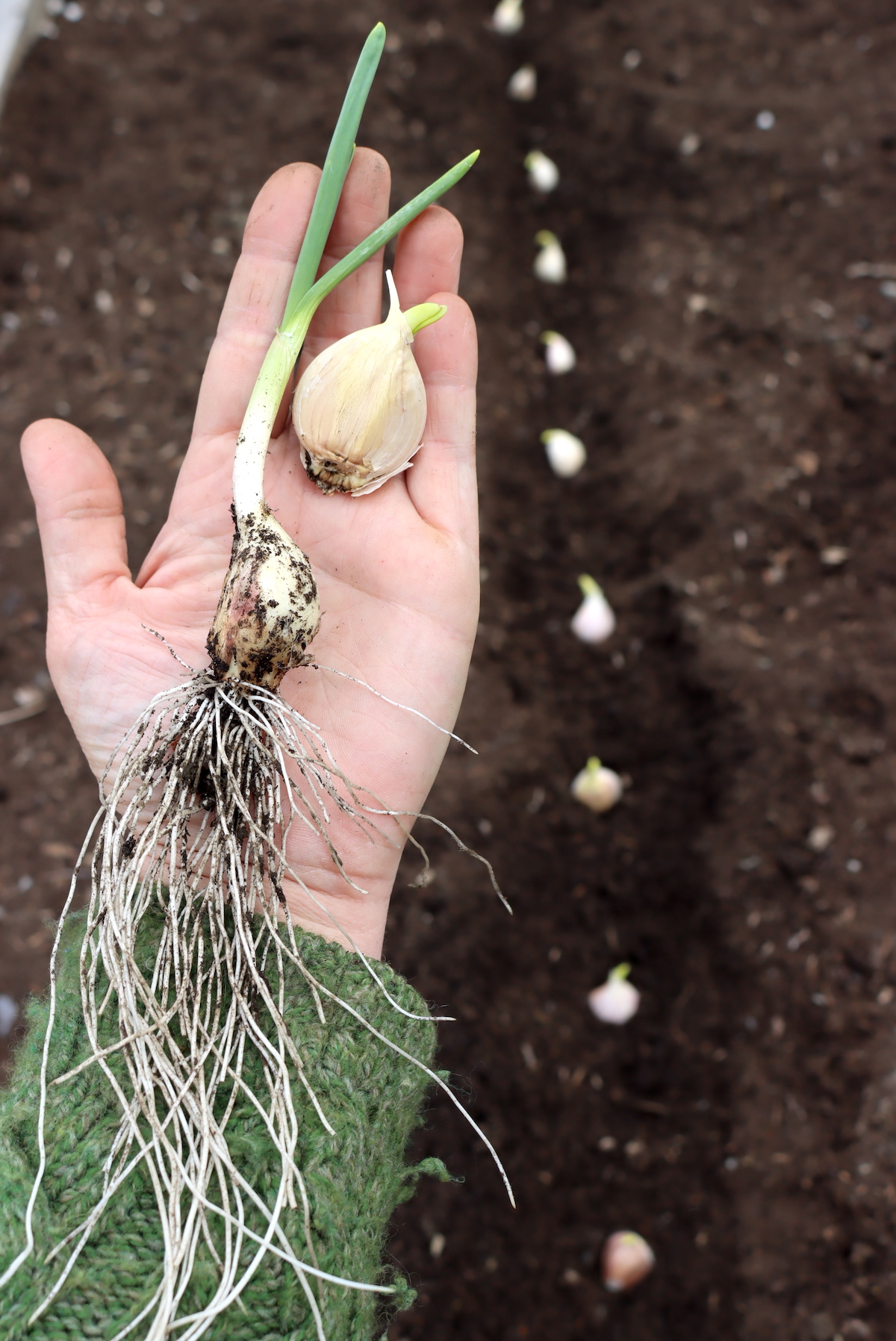
Though planting garlic in the spring is not ideal, the plants will usually still grow and develop in time for harvest in late summer (alongside the fall-planted crop). If planted too late in the spring or in early summer, the bulbs may not develop fully until the following year.
Curing Garlic
After you harvest garlic, it’s what’s known as “green garlic” or “fresh garlic,” and it tastes milder than cured storage garlic. It can be used fresh, and it’s delicious that way.
You won’t find fresh garlic outside of just a few weeks of the year at well-stocked farmer’s markets, so I’d suggest trying it because you won’t get many chances.
The problem with green garlic is it doesn’t store well.
If you want to put your homegrown garlic back in the pantry, you’ll need to cure it. Place lay it out in a shaded area with good air circulation, ideally with a fan blowing on it in humid climates.
Leaving the tops on is optional at this point, but it helps the garlic cure faster. The drying top helps dry out the outer layers of the garlic bulb.
We cure our garlic laid out on our garage floor with a fan. It’s not ideal, but it works. In an ideal situation, you’d hang the garlic somewhere with good air circulation but out of direct sunlight (like under a covered porch).

Once the top is completely dried out, and the bulb has a good papery layer on the outside, it’s ready for storage. Trim off the top (if it’s still on) and the roots.
That garlic can be stored in the pantry and should keep for several months if properly cured and kept out of sunlight.
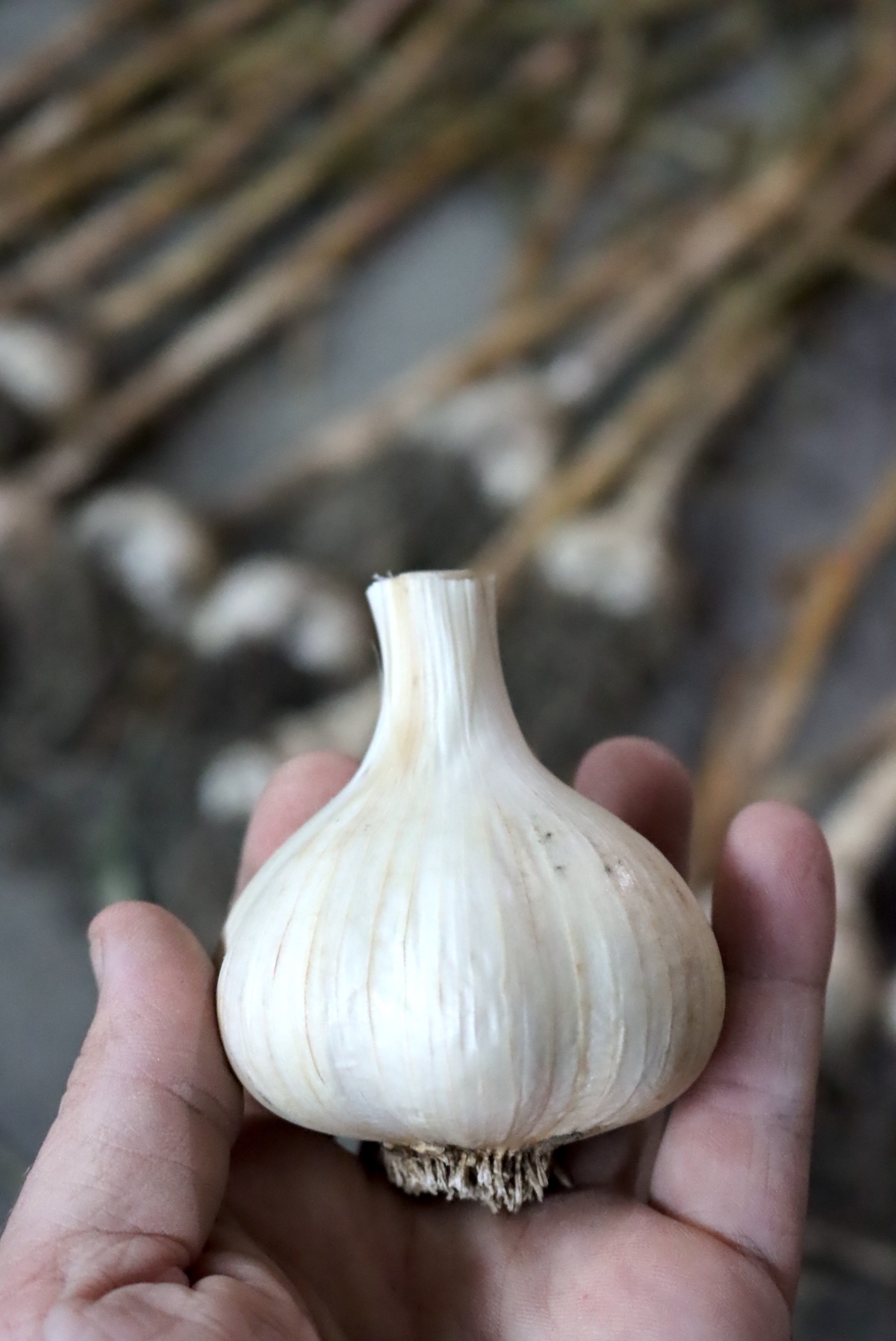
In humid areas or areas with really hot climates, garlic won’t store well in bulb form. I’d suggest making pickled garlic, or fermented garlic honey if you’re adventurous.
If it does sprout again…you’ll know what to do. Either eat it as delicious green sprouted garlic or plant it again!
Growing Guides
Looking for more growing guides?
- DIY Sweet Potato Slips
- How to Grow Pineberry
- Growing Grapes from Cuttings
- Growing Lemon Trees from Seed
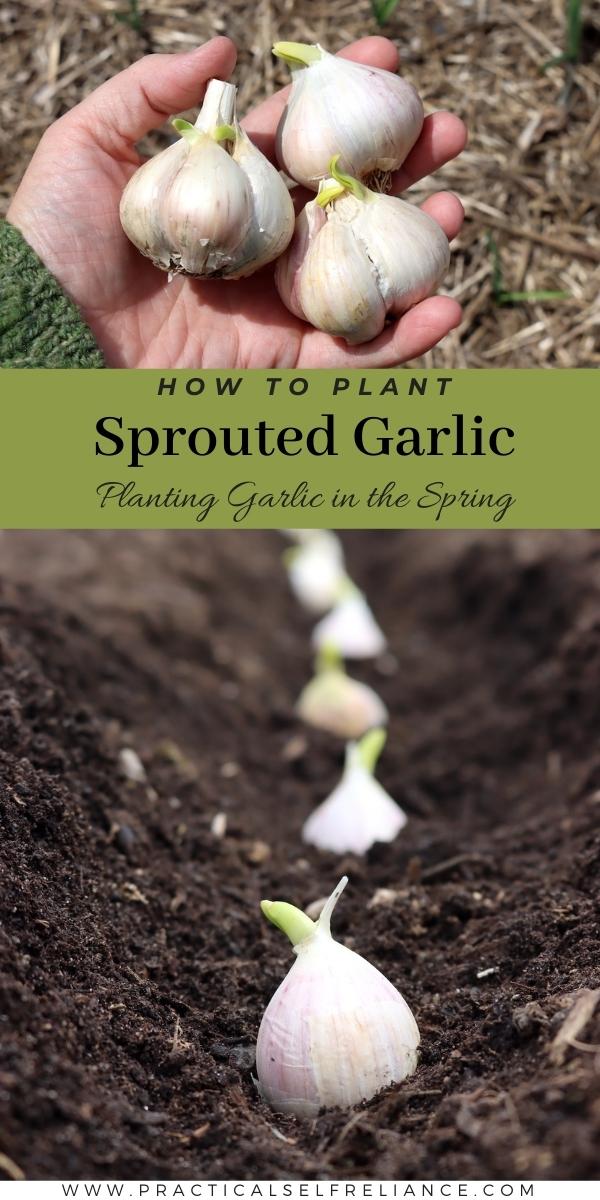














Thanks for sharing!! We’ve been finding our garlic from the store sprouts within 2 weeks of buying, so I wanted to try something fun with them!
I’ll be doing this in an inside pot, any tips on watering? Or when to over to a bigger pot?
If you plan to keep it inside, you may need to offer some additional fertilizer since garlic is a heavy feeder. You should be able to water it like anything else. As far as moving it to a bigger pot, it kind of depends on how you plant to grow it. If you’re wanting to harvest the bulbs then you would do that once the heads have developed and then replant the individual cloves for new bulbs. You may not need a bigger pot. Here is another post on growing garlic that might help. https://practicalselfreliance.com/how-to-grow-garlic/ And then we also have a post on growing garlic as a perennial here. https://practicalselfreliance.com/perennial-garlic/
I start garlic in water bottles on the windowsill, they grow great roots and green leaf shoots, then transplant them to soil. Wanting until fall to see how this works.
I haven’t ever tried it like this. Thanks for sharing and let us know how it goes.
Thank you! I live in an NYC Apartment and planted four sprouted Garlic Cloves that are growing very well under my grow light in seedling trays. When should I transplant them to pots? What size pots do you suggest I get?
Garlic doesn’t need much room to grow, as long as you have enough soil to accommodate the size of the finished bulb.
Thank you for providing all of this information. Last Fall was the first time I have ever planted garlic and you have left nothing out of the process of planting, when to pull, curing and storing.
I can not wait to try my first cloves fresh from my garden.
You’re very welcome. We’re so glad you enjoyed the post. We hope you enjoy your first garlic harvest.